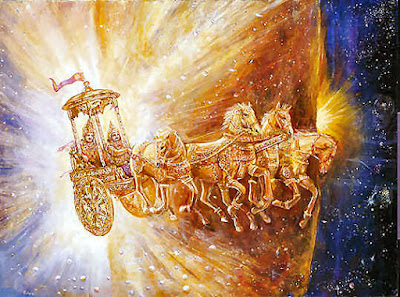A Mystical View into Konark Temple in Orissa
Posted by: Adhika | Posted on: September 4th, 2012 | No Comments

As the nostalgia of summer now comes to a tranquil halt following Labour Day Weekend, we all adapt ourselves to a new rhythm of fall surrounding us. There is a new wave of creativity overwhelming our senses and a new quickened tempo to our footsteps. In light of these seasonal changes I wanted to dedicate this post to Konark Temple in Orissa, as being an International Heritage Site by UNESCO. The temple was built to honour the hindu God of the Sun – Surya Dev.
Surya in hindi translates to ‘the sun’ is depicted as riding a chariot driven by seven white horses. The Chariot harnessed by seven horses represent the seven colours of the rainbow or the seven chakras. Surya is the life giver, sustaining all life on earth by providing all radiance and energy. He is shown mounting the wheel of time and is also the one who is responsible for the beautiful seasons causing the cycle of day and night. The Surya is referred to in Sanskrit as “Mitra” or “Friend” due to the invariable warmth He exudes to the World.
Astonishingly the Konark Temple replicates this depiction representing Surya Dev. Konark Temple is located on the shoreline, in Orissa India. The temple takes the form of the charoit of Surya (Arka), the Sun God, and is heavily decorated with stone carving. The entire complex was designed in the form of the God’s huge chariot drawn by seven spirited horses on twelve pairs of exquisitely decorated wheels at its base. The huge wheels carved at the base of the temple are one of the major attractions. The spokes of the wheels serve as sundials and the shadows cast by these can give the precise time of the day. The pyramidal roof soars over 30 m (98 ft) in height. The temple complex also contains erotic sculptures similar to the temple in Khajuraho.

(Special thanks to Creative Commons Attribution 3.0 Unported license for this brilliant picture of the site)
The entrance is guarded by two giant lions, which are each shown crushing a war elephant. Each elephant in turn lies on top of a human body. The temple symbolizes the majestic stride of the Sun God. At the entrance of the temple is a Nata Mandir. This is where the temple dancers used to perform dances in homage to the Sun God. All around the temple, there are various floral and geometric patterns. The temple is now partly in ruins, and a collection of its sculptures is housed in the Sun Temple Museum, which is run by the Archaeological Survey of India. The poet Rabindranath Tagore wrote of Konark: “Here the language of stone surpasses the language of man.”
As we’re all gearing up for this new pace of Life, I wanted to personally wish you a marvellous jolt of new energy to boost you through your newly adjusted schedules – with lots of positive energy to keep you balanced throughout these changes!



Facebook Comments
Leave a Comment